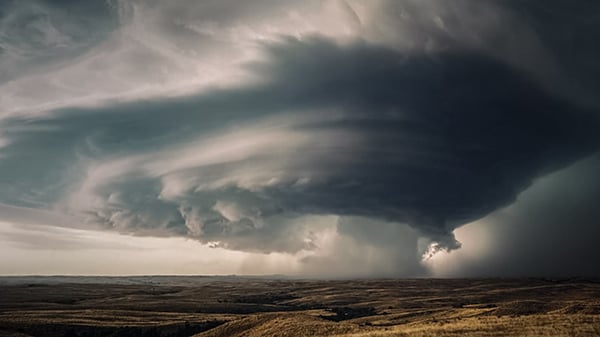
The most dreaded pitfall of any manufacturer or construction company is downtime. Any industry leader will confirm that the unplanned stop of production is the single most significant loss of money, man-hours, and efficiency.
Downtime affects the three fundamental elements of manufacturing:
- People
- Productivity
- Profitability
According to Aberdeen research, 82 percent of companies have experienced unplanned downtime over the past three years, and that unplanned downtime is estimated to cost over $250,000 per hour!
How does a temporary fabric solution factor into a company's downtime? Customer options when choosing a temporary warehouse solution include considerations that affect the soundness of the structure and its ability to do the job. A project's purpose, length of the lease, location, and climate are all factors in choosing the right structure. The wrong decision in any of the four can affect downtime. Among climate factors, the wind is a quiet giant and potential culprit for unplanned downtime in the high-wind country.
Wind-Load Certified Temporary Fabric Structures
Wind-load certification is the term used to describe the ability of a structure to withstand high winds. A properly engineered wind-load certified structure can withstand heavy rainfall and wind load up to 130 miles per hour. To offer some perspective on exactly how high 130 mph winds are, 2019’s Hurricane Dorian was consistently belting 130-150 mph winds across the Bahamas.
Not acknowledging or respecting the power of high wind by matching it with an equally powerful temporary structure leads to unplanned downtime and the painful expense that comes along with it.
People
Every manufacturer understands the reality of the stringent timelines associated with production. The inability to meet deadlines can set the wheels in motion for disaster with customer and employee relationships. Distributors expect delivery and have end-users waiting. Downtime causes tension and adds strain on relationships; it can be a deal-breaker when it comes to trust. The feeling of being let down is a hard obstacle for a business relationship to overcome and has little chance of recovery.
Employees expect and deserve safety and comfort in their working environment. Imagine a structural integrity problem forcing the evacuation of employees in the middle of a workday. Displaced workers are a costly byproduct of a poor choice in temporary structures.
Productivity
Having to replace an unreliable temporary structure because it lacks the proper wind-load certification causes a loss of productivity. Experiencing a “do-over” as a mega-corporation isn’t just painful; it’s debilitating to a company that hangs its hat on fast and efficient production. The added stress of hiring a new vendor to replace a sagging structure is also time-consuming, and damaged equipment can bring the assembly line to a screeching halt.
Profitability
Every minute counts as a manufacturer, and time is money. A manufacturer’s bottom line depends on getting a finished product to the distributor. Hard deadlines are also common to the contractor paying hourly employees on a job-by-job basis. In either industry, the speed and ability of your workforce to complete the work means the difference in a boosted or busted bottom line. Unplanned downtime can cost millions to manufacturers.
Temporary Structures Engineered For High Wind
Customers can avoid the problems associated with the combined hazards of high winds and subpar temporary structures to their bottom line by selecting a vendor known for engineering products proven to meet the demands of the job.
The Sunbelt Rentals Tension Series™
Sunbelt Rentals' Tension Series™ (MTS™) fabric structure is certified and engineered to withstand a stated wind speed, which involves three types of wind-load forces: shear, lateral and uplift.
- Shear load — horizontal wind pressure that can make a facility tilt
- Lateral load — push-pull pressure that can move a structure off its foundation
- Uplift load — pressure from wind flow that causes lifting effects
Engineered using the standard peaked-arch profile, the Sunbelt Rentals Tension Series (MTS™) has proven its versatility on projects ranging from sports facilities to permanent warehouses.
The MTS™ structure is engineered for quick installation and used for temporary or permanent projects. If your needs change, it can be easily relocated or expanded. It’s flexible and is perfectly designed to be crane-lifted for those applications such as temporary excavation or environmental remediation projects.
In Conclusion
Unpredictable weather patterns and high winds are becoming increasingly more frequent. When considering options for a new temporary structure, be advised to avoid structural disaster by partnering with a vendor that understands the value of custom design-engineered products. Choose a partner well-versed in regulatory standards and codes regarding the strength and stability of fabric structures.
Sunbelt Rentals' versatile inventory of fabric building structures allows customers to choose a sensible, cost-saving advantage and economical alternative to traditional construction.
Sunbelt Rentals supplies temporary, semi-permanent and custom structures for nearly any commercial or industrial application, including temporary warehouses, construction site covers, blast-resistant tents, lunch tents, environmental enclosures, aviation hangars, and manufacturing facilities.